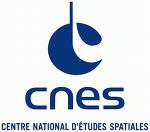The SVOM mission,
a
new generation GRB mission
Future GRB studies must rely on the availability of a continuous flow
of accurate GRB positions (to take advantage of instrumental progress),
but also on the measure of many additional parameters of the GRB (e.g.
redshift, E-peak, jet break time, ...) which are crucial for the
understanding of the GRBs themselves and for their use as astrophysical
tools.
The SVOM mission (Space-based multi-band
astronomical Variable Objects Monitor) will:
- Permit
the detection of all known types of GRBs
- Provide fast, reliable GRB positions
- Measure the broadband spectral shape of the
prompt emission (from visible to MeV)
- Measure the temporal properties of the prompt
emission (from visible to MeV)
- Quickly identify the afterglows of detected
GRBs at X-ray and optical wavelengths, including those which are highly
redshifted (z>6)
- QMeasure the broadband spectral shape of the
early and late afterglow (from visible to X-rays)
- QMeasure the temporal evolution of the early
and late afterglow (from visible to X-rays)
The mission concept
The constant advances in the field of GRB studies is made possible by
the increasing synergy between space and ground instruments. The SVOM
mission has been designed to optimize particularly this synergy. The
on-board instruments will permit the detection of the GRBs, their
localization from arcminutes to arcsecondes accuracy, the study of the
prompt emission, the early detection and follow-up of visible
afterglows, and the primary selection of high-redshift candidates
(z>6). The ground segment will permit the fast distribution of
the alerts, the localization of GRBs with sub-arcsecondes precision and
the multi-band photometry of the afterglow and the prompt emissions,
from the visible to the near-infrared domains.
These functions will be achieved by a set of wide
and narrow field instruments. Such a combination requires a very
specific observation scenario, which is based on the successful
experience of the Swift mission:
- the detection is done by a very wide field
gamma-ray imaging instrument able to derive on-board localization with
few arcminutes accuracy;
- the position is immediately transmitted to the
ground segment and to the scientific community through a VHF stations
network;
- in parallel the satellite slews rapidly and
automatically (when safely possible, regarding to the pointing
constraints) to position the GRB in the narrow field of view of the
onboard instruments, an X-ray and an optical telescopes, which will
study the afterglow and provide refined coordinates. The observations
start less than 5 minutes after the detection.
The scientific objectives of the mission put a
very special emphasis on two categories of GRBs: very distant events at
redshift greater than 6, which constitute exceptional cosmological
beacons, and faint/soft nearby events, which allow probing the nature
of the progenitors and the physics at work in the explosion. These
goals have a major impact on the design of the mission: the onboard
hard X-ray imager must be sensitive down to 4 keV and able to compute
image and rate triggers on-board, and the follow-up telescopes on the
ground must be sensitive in the near infrared.
|
 The SVOM French Web Site
The SVOM French Web Site







